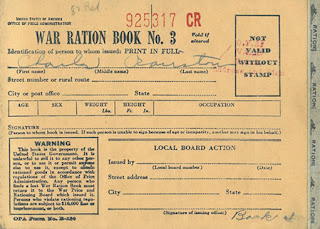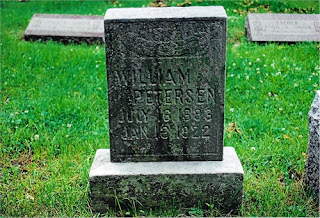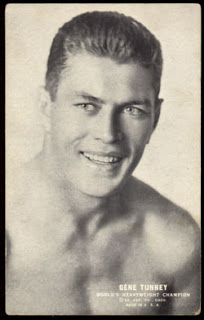The Curt Teich Postcard Archives—an internationally renowned collection—calls Lake County, Illinois home. As it turns out, so did Curt Teich.
Curt Teich lounging at his summer property on Bluff Lake near Antioch, Illinois, circa 1940. (Teich Family Papers CTPA)
One of the world's most successful postcard publishers, Curt Teich, has roots in Chicago dating back to the 1890s, and in Lake County to the 1930s.
Curt Otto Teich (1877-1974) grew up in Lobenstein, Germany. While Curt was learning the printing trade, his father, Christian, and older brother, Max, traveled to the United States to see the World’s Columbian Exhibition in Chicago. When his father returned to Germany, he urged Curt to join Max in America.
Curt immigrated in 1895, and eventually settled in Chicago, where in 1898 he opened a printing business.
From 1911 until 1978 the Teich Company operated out of the factory on W. Irving Park Road in Chicago. This postcard view shows the factory after the five-story addition was completed, 1922. (CTPA A91552)
In order to stand apart from the many printers in Chicago, Teich became an innovator. He turned the bulk of his operation to printing postcards, and developed a large off-set press to meet production needs. Teich postcards became known for their quality and brilliance of color.
This Fox Lake postcard from 1950 is vivid and eye-catching, and showcases the Teich Company's signature product, the "large letter" card, which they developed and produced to great acclaim. The Teich Company produced postcards for all of North America with views ranging from Main Streets to tourist sites to advertisements. (CTPA OCH1828).
From the 1920s to 1940s, the Teich Company became the world's largest producer of postcards.
As the family's fortunes increased, Curt Teich puchased a summer home on Bluff Lake near Antioch, Illinois. The family's main residence was a beautiful estate house in Glencoe.
Teich summer home on Bluff Lake. It is believed Curt Teich owned the property from the early 1930s until his death in 1974. (Teich Family Papers CTPA)
Porch at Teich summer home. (Teich Family Papers CTPA)
Curt Teich with his youngest son, Ralph, at the Bluff Lake summer house, circa 1933. (Teich Family Papers CTPA)
Curt Teich looking pleased with his catch of the day out of Bluff Lake, circa 1933. (Teich Family Papers CTPA)
View of Bluff Lake from the Teich's summer home, circa 1933. (Teich Family Papers CTPA)
Teich's youngest son, Ralph Teich, (1925-2000) lived most of his life in Lake County, either at the summer house or as an adult at his own beautiful estate house in Lake Forest.
It was Ralph Teich's foresight and vision that saved the company's archives. In 1982, he donated the archives to the Lake County Discovery Museum.
For more on the history of the Curt Teich Company check out the Archives's blog The Curt Teich Postcard Blog.
In celebration of American Archives Month, the Curt Teich Postcard Archives is giving behind-the-scenes tours on Thursday, October 18, 2012. Registration is required, and there are still a few openings for the morning tour.



































































































